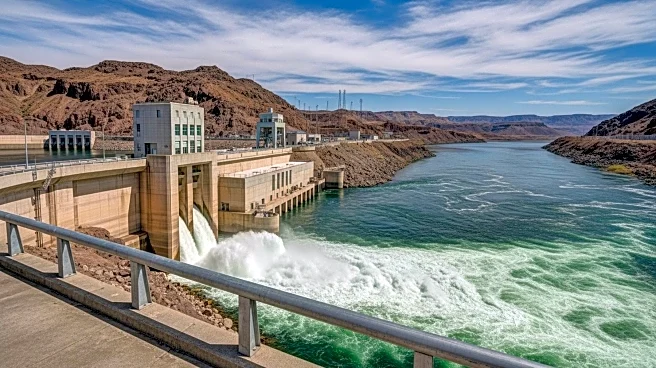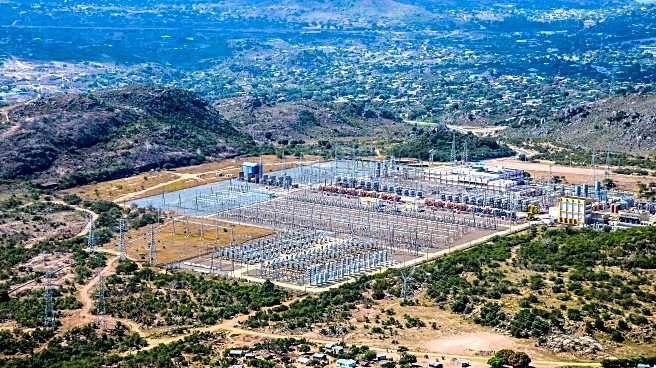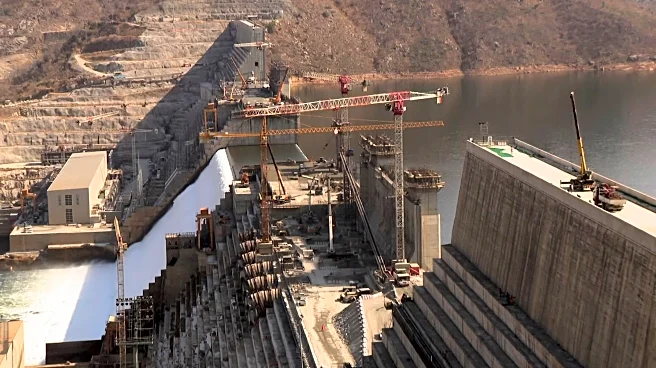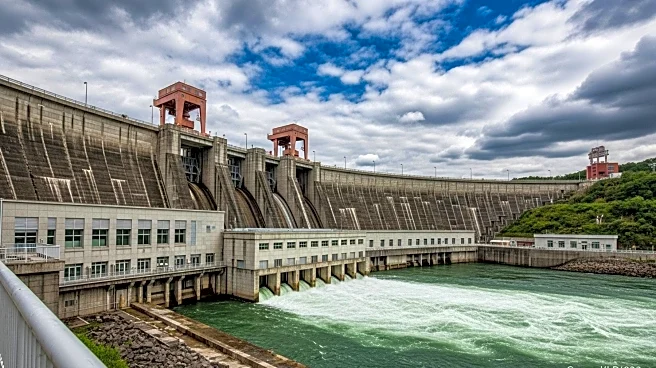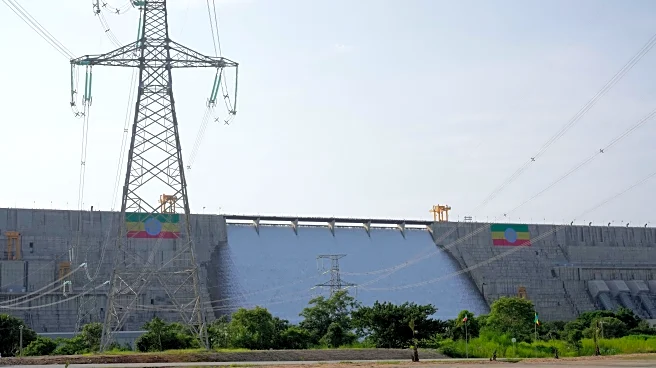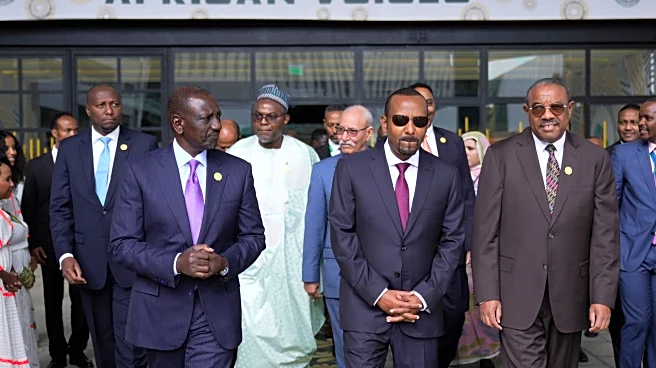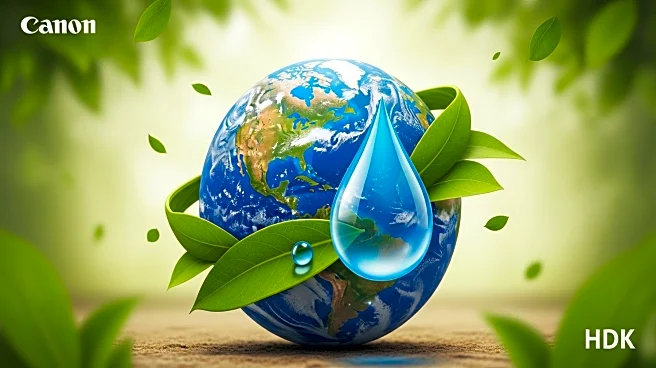What is the story about?
What's Happening?
Ethiopia has completed the Grand Ethiopian Renaissance Dam (GERD), a major hydroelectric project on the Blue Nile, which has been a source of tension with Egypt. The dam, costing approximately $5 billion, is set to be inaugurated soon and is expected to boost Ethiopia's energy production and foreign currency earnings. However, Egypt fears that the dam will significantly reduce the flow of Nile water, which is crucial for its population and agriculture. The dam's reservoir stores 64 billion cubic meters of water, which Egypt claims is a substantial loss from its annual share of 55.5 billion cubic meters. Ethiopia has maintained that the dam is vital for its development, despite diplomatic pressure and threats from Egypt.
Why It's Important?
The completion of the GERD marks a significant shift in regional power dynamics, potentially altering water distribution in the Nile Basin. For Ethiopia, the dam represents a major step towards energy independence and economic growth, as it plans to sell electricity to neighboring countries and beyond. Conversely, Egypt faces challenges in securing its water supply, which could impact its agriculture and overall water security. The situation underscores the geopolitical complexities surrounding transboundary water resources and the need for cooperative management to prevent conflict.
What's Next?
Egypt has taken steps to mitigate potential water shortages by building the world's largest water treatment plant and drilling thousands of wells. It has also reduced rice cultivation, which is water-intensive. Diplomatic efforts are likely to continue, as Egypt seeks to negotiate water release and dam safety with Ethiopia. The broader implications for regional cooperation and water management remain uncertain, with potential for further negotiations or tensions.
Beyond the Headlines
The GERD's completion challenges historical agreements that favored Egypt's control over Nile waters, reflecting Ethiopia's growing influence in the region. The dam has united Ethiopians across ethnic lines, symbolizing national pride and achievement. However, concerns about environmental impacts, such as potential earthquakes due to the dam's weight, persist. The situation highlights the need for sustainable and equitable water resource management in the face of climate change and population growth.
AI Generated Content
Do you find this article useful?
